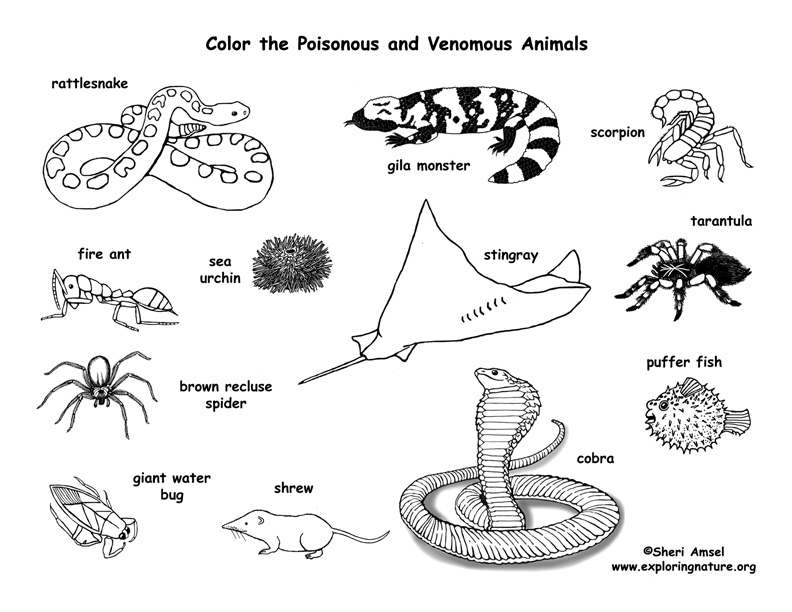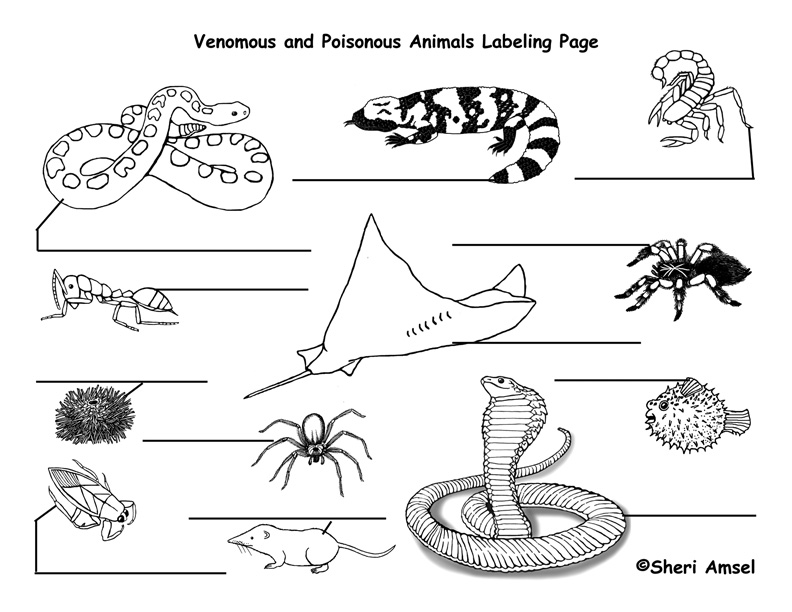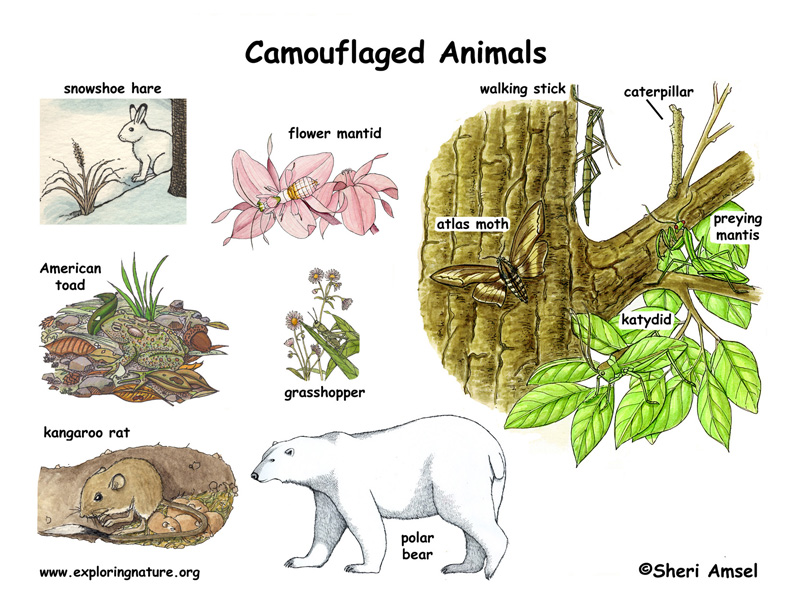

Adaptation in a population of organisms happens as a result of something called an adaptive trait. This is any inheritable trait that increases an organism’s survival rate so that it can live longer, reproduce longer, and have more offspring (that also have that trait). This is called differential reproduction.
Adaptative traits can improve an animal's ability to find food, make a safer home, escape predators, survive cold or heat or lack of water. Sometimes the trait is obvious, like a skunk spraying, but sometimes it is harder to see and interesting to discover.
Animals may develop types of cryptic colors, patterns and behaviors to survive. Some simply have the same colors as the surrounding environment. This is called, blending. Some combine cryptic coloring with the actual details of the leaves, bark or plants on which they live, forming a disguise. Some animals develop a color pattern, like spots, zigzags or stripes to hide the outline of their bodies or blend in with dappled light, irregular bark or tall grass. Some animals mimic the body coloring or actions of poisonous or bad tasting prey to benefit from that protection. Some animals enlarge themselves to discourage predators. Others try to startle a predator with a loud hiss, a flash of color or leaping. This is adaptive behavior. Sometimes physical adaptations help animals survive in their habitat. Longer, thicker fur for the cold; larger ears to cool the blood in the heat; or webbed feet. These are all traits that increase survival so are considered adaptations.
It takes many, many generations for a new physical adaptation to spread throughout a whole population of animals.
If all the animals in a population are of the same species, how do some develop an adaptive trait that can become a useful adaptation? Think about this, then read on.
In a population of organisms there is always some genetic variability. This means that not all the individuals in a population are exactly alike. For instance, not all the caribou in a herd are exactly alike. If a few caribou have a trait – like wider feet for walking in the snow – that helps them survive to have more offspring, they have a selective advantage. This is an example of natural selection. Natural selection can lead to the adaptive trait showing up in more and more of a population.
There are 3 things that make natural selection work.
1) Genetic variability in a population, so that a trait appears that can give an advantage.
2) The trait must be inheritable so it can be passed on to the offspring.
3) The trait must lead to more offspring surviving. This is called differential reproduction.
Adaptations that change an organism’s physical traits occur mostly in rapidly reproducing species – like insects. This is not something that happens readily in humans. We do not reproduce fast enough or have enough offspring for this to work. Other things affect human change. Even then it can take thousands of years.
Essential Questions:
1. Why is genetic variability important in a population for developing adaptations?
2. Why does an adaptive trait have to be inheritable for it to lead to adaptation?
3. Why does it take many generations for natural selection to occur?
Physical Adaptation Activities
Color and label the Venomous and Poisonous Animals pages. Can you name which animals are poisonous and which are venomous? Do any of these animals live near you?
Look over the Camouflaged Animals poster. Can you tell if the camouflage is just color or do their body shapes help them blend in too? Do any of these animals live near you?
When you research information you must cite the reference. Citing for websites is different from citing from books, magazines and periodicals. The style of citing shown here is from the MLA Style Citations (Modern Language Association).
When citing a WEBSITE the general format is as follows.
Author Last Name, First Name(s). "Title: Subtitle of Part of Web Page, if appropriate." Title: Subtitle: Section of Page if appropriate. Sponsoring/Publishing Agency, If Given. Additional significant descriptive information. Date of Electronic Publication or other Date, such as Last Updated. Day Month Year of access < URL >.
Amsel, Sheri. "Adaptation - What is it? (MS/HS Reading level)" Exploring Nature Educational Resource ©2005-2024. December 13, 2024
< http://www.exploringnature.org/db/view/1693 >



